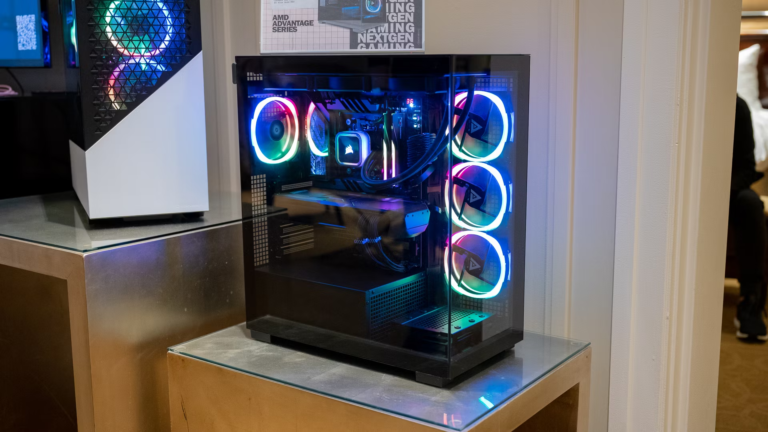
Contents
Graphics processing units (GPUs) have undergone significant technology advancements in recent years, revolutionizing the way we interact with computers and powering a wide range of applications beyond traditional graphics rendering. In this blog, we’ll explore the latest GPU technology advancements, their applications across various industries, and the impact they have on computing performance and innovation. Fusion hardwares is the best option for you to buy your required components.
Understanding GPU Technology
GPU technology advancements from its origins as a specialized hardware component for rendering graphics in video games to becoming a versatile computing powerhouse capable of handling complex calculations and tasks in parallel. Modern GPUs feature thousands of cores optimized for parallel processing, making them ideal for tasks such as artificial intelligence (AI), machine learning (ML), data analytics, scientific simulations, and more.
Advancements in GPU Architecture
Over the years, GPU manufacturers such as NVIDIA and AMD have introduced new architectures and technologies to enhance performance, efficiency, and capabilities. Key advancements include the introduction of tensor cores for AI and deep learning workloads, ray tracing for realistic rendering in video games and visual effects, and dedicated hardware for accelerating specific tasks like video encoding and decoding.
Applications Across Industries
GPUs are utilized across a wide range of industries and applications, driving innovation and efficiency in areas such as:
- Gaming: GPUs remain a cornerstone of the gaming industry, delivering lifelike graphics, immersive experiences, and high frame rates to gamers worldwide.
- Artificial Intelligence and Machine Learning: GPUs are essential for training and inference in AI and ML applications, enabling rapid processing of vast amounts of data and complex algorithms.
- Data Science and Analytics: GPUs accelerate data processing and analysis tasks, allowing organizations to derive insights from large datasets quickly and efficiently.
- Scientific Research and Simulations: GPUs are used for scientific simulations, weather forecasting, molecular modeling, and other computationally intensive tasks, enabling researchers to explore complex phenomena and solve problems faster than ever before.
- Computer-Aided Design (CAD) and Engineering: GPUs enhance the performance of CAD software and engineering applications, enabling engineers and designers to create and visualize complex designs with ease.
Impact on Computing Performance and Innovation
Enhanced Processing Speed: GPU advancements have revolutionized processing speed in computing. By harnessing parallel processing capabilities, tasks that once took hours or days can now be completed in minutes or even seconds. This exponential increase in speed facilitates the swift execution of complex algorithms and computations, driving efficiency and productivity across various industries.
Efficiency Improvements: Modern GPUs offer high performance per watt, meaning they deliver significant computational power while consuming relatively less energy compared to traditional CPUs. This efficiency not only reduces operational costs but also promotes environmentally sustainable computing practices, aligning with the growing emphasis on eco-friendly technology solutions.
Acceleration of Specialized Workloads: One of the most significant impacts of GPU technology is its ability to accelerate specialized workloads. GPUs are tailored for specific computational tasks, such as AI training, scientific simulations, and image processing. By offloading these workloads from CPUs to GPUs, organizations can achieve remarkable performance boosts and drive innovation in their respective fields
The advancements in GPU technology have had a profound impact on computing performance and innovation, enabling:
- Faster Processing: GPUs accelerate tasks that were once computationally prohibitive, reducing processing times and enabling real-time performance in demanding applications.
- Greater Efficiency: GPUs deliver high performance-per-watt compared to traditional CPUs, making them more energy-efficient and cost-effective for parallelizable workloads.
- Breakthroughs in AI and ML: GPUs have fueled breakthroughs in AI and ML, enabling advancements in natural language processing, computer vision, autonomous vehicles, and more.
- Visual Realism: GPUs power realistic graphics rendering techniques such as ray tracing, bringing cinematic-quality visuals to video games, movies, and virtual environments.
Conclusion:
GPU technology continues to push the boundaries of computing performance and innovation, driving advancements across industries and enabling new possibilities in gaming, AI, data science, scientific research, and beyond. As GPUs evolve and become even more powerful and versatile, the potential for transformative applications and breakthroughs in technology grows exponentially